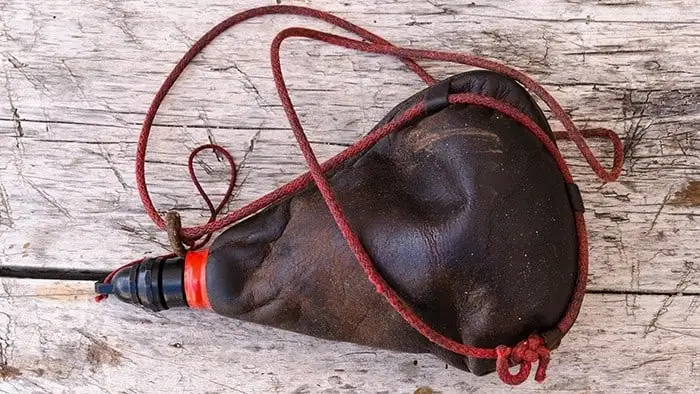After identifying Jesus as the Lamb of God and baptizing Him in the Jordan, John the Baptist found himself in prison. The prophet had publicly called out Herod Antipas-the tetrarch of Galilee and Perea-for his various sins, including the taking of his brother’s wife.
While he sat in prison, his disciples would come back and give him reports about what Jesus was doing. These reports must have been troubling for John. The prophet had led an ascetic lifestyle, denying himself choice foods, alcohol, and fine clothes (Luke 1:15, Mark 1:6). And he was hearing that Jesus was gathering with sinners, feasting and drinking (Matthew 11:18-19), and not following the rules of the Pharisees.
Eventually, John would send his disciples to ask Jesus if He is indeed the Messiah, or if Israel should be looking for someone else (Matthew 11:2-6). But even before that dramatic moment, John was desperately trying to understand what was happening. At one point, Matthew tells us about this exchange:
Then John’s disciples came and asked him, “How is it that we and the Pharisees fast often, but your disciples do not fast?”
Jesus answered, “How can the guests of the bridegroom mourn while he is with them? The time will come when the bridegroom will be taken from them; then they will fast” (Matthew 9:14-15).
Like the preacher in Ecclesiastes, Jesus tells John’s disciples that there is a time for everything. The Jewish people linked fasting to mourning. A wedding celebration isn’t the time for denying oneself; it’s a time for celebrating. Jesus promises that the time for mourning was coming, but this wasn’t it. And then Jesus offers one of the parables that He’ll come to be known for:
“No one sews a patch of unshrunk cloth on an old garment, for the patch will pull away from the garment, making the tear worse. Neither do people pour new wine into old wineskins. If they do, the skins will burst; the wine will run out and the wineskins will be ruined. No, they pour new wine into new wineskins, and both are preserved” (Matthew 9:16-17).
New wine and old wineskins
Because we’re unfamiliar with ancient practices, sometimes it’s difficult for modern readers to understand Jesus’s parables. In Jesus’s day, people used animal skins-like goatskin-for storing liquids. Fermented drinks like wine expanded, and since an old wineskin would already be stretched to its limit, the new wine would tear the seams.
This is why new wine needed to be preserved in new wineskins. As the wine expanded, the new skins would stretch to accommodate it.
Jesus was making a very specific point to John the Baptist. He was here to do something completely new. If John (or anyone else) tried to make sense of it through a lens of old expectations and regulations, they’d miss the amazing thing that was happening. Through Jesus, God was redeeming the world to Himself. And if people expected this to look familiar to what God had done before, they wouldn’t understand.
Modern Christians have the benefit of hindsight. We get to see the whole picture in a way that makes sense. Those who chose to follow Jesus in the first century struggled with a lot of confusion. Was this Messiah going to conquer their enemies? Why did Jesus behave so differently than other rabbis? Why was the religious establishment so angry with Him? Questions like these would have created a lot of unrest and anxiety in His Jewish audience.
Pay attention to the fruit
Jesus encouraged contemporaries to quit focusing on how His behavior fit in the current religious climate. Instead, He told them to focus on the fruit of His ministry. That’s why when John sends His disciples to ask whether they should be looking for someone else, Jesus says this:
“Go back and report to John what you hear and see: The blind receive sight, the lame walk, those who have leprosy are cleansed, the deaf hear, the dead are raised, and the good news is proclaimed to the poor. Blessed is anyone who does not stumble on account of me” (Matthew 11:4-6).
When people focused on Jesus’s fruit, it was easy to see that God was at work. It’s when they got distracted by the Pharisaical system that they questioned what Jesus was doing. When one focuses on the fruit of Jesus’s ministry, it’s a lot more difficult to get off track.
And this is the same standard Jesus used for determining who belonged to Him:
“Watch out for false prophets. They come to you in sheep’s clothing, but inwardly they are ferocious wolves. By their fruit you will recognize them. Do people pick grapes from thornbushes, or figs from thistles? Likewise, every good tree bears good fruit, but a bad tree bears bad fruit. A good tree cannot bear bad fruit, and a bad tree cannot bear good fruit. Every tree that does not bear good fruit is cut down and thrown into the fire. Thus, by their fruit you will recognize them” (Matthew 7:15-20, emphasis added).
Looking at fruit helps us to recognize followers of Jesus, even when people come from unfamiliar theological or cultural backgrounds. Otherwise, like the people in Jesus’s day, we’re tempted to use the wrong standards for discerning what Jesus is doing in the world around us.
If you’re interested in learning more about Jesus’s teachings, check out the post “All the Parables of Jesus.”
